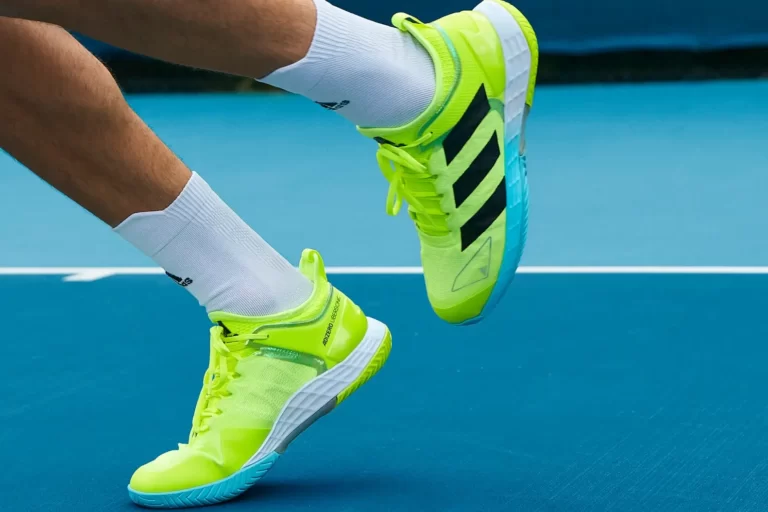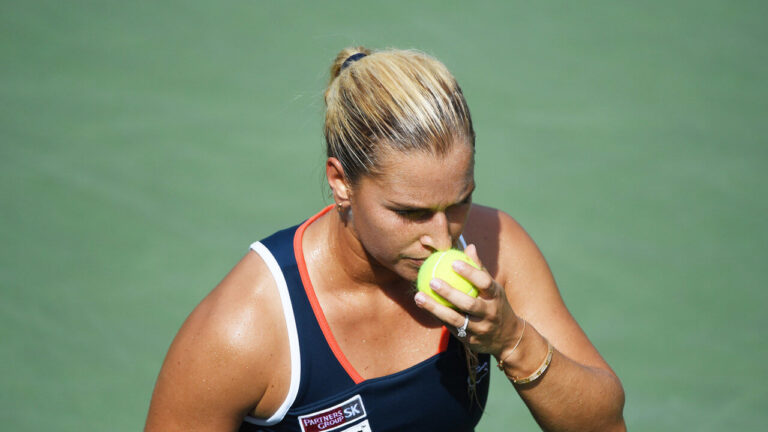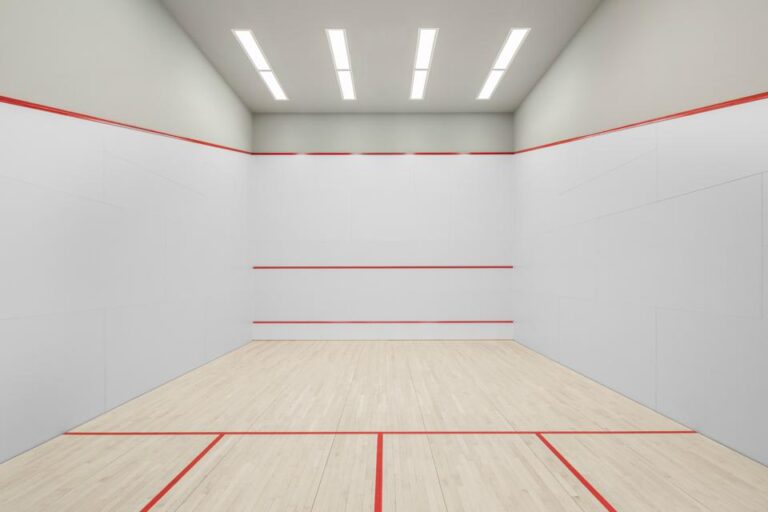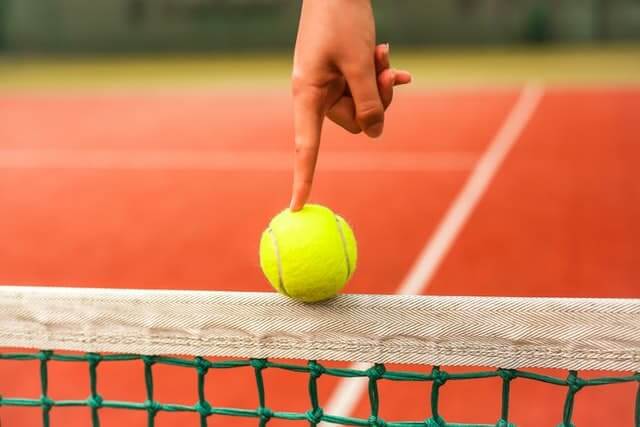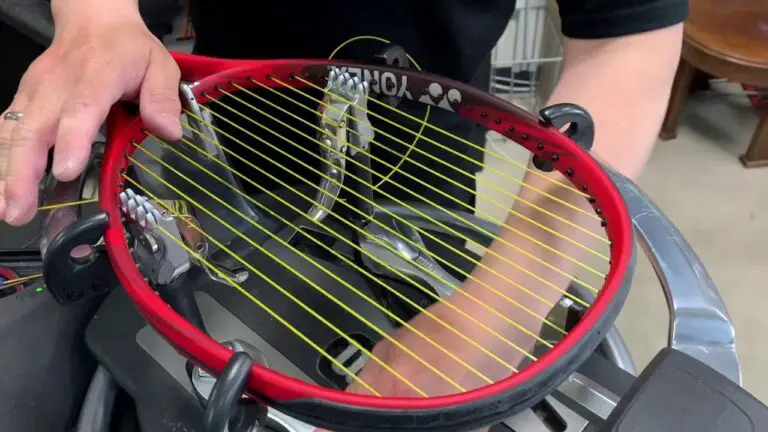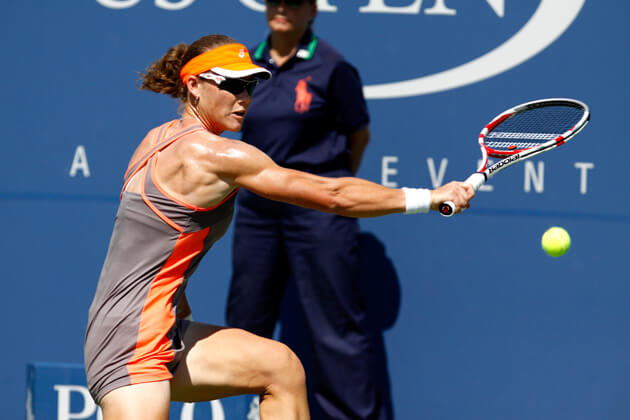What Does A Slow Tennis Court Mean?
Like a park court, a slow court is typically composed of clay. These surfaces’ ground produces more friction, which reduces the ball’s speed as it touches the surface. Typically, a fast court has carpeting, real grass, or fake grass inside.
Tennis is a game recognized for its various court surfaces, each significantly affecting the match. The speed of a tennis court, or how quickly the ball leaves the surface, substantially impacts how players play and their tactics.
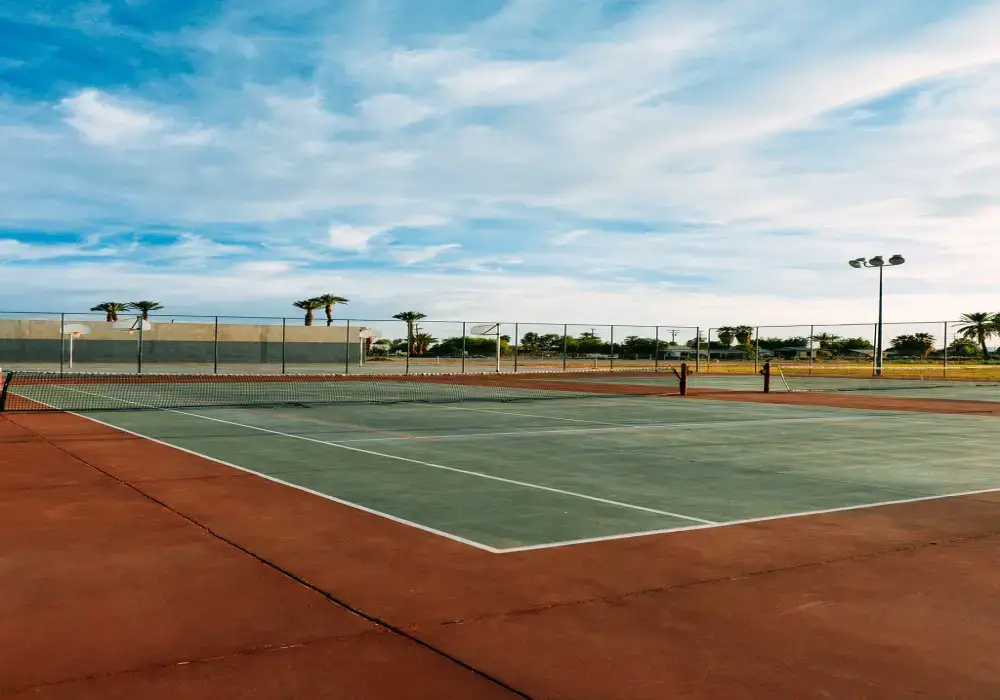
Tennis players must modify their skills and strategies to suit the playing style that a slow or fast court favors. This article will discuss what it means to have a slow tennis court and how it impacts play.
➢ Slow tennis court
Before we delve into the factors and types of slow court, let me explain this term to you in simple words so that it becomes clear to you.
The term “slow tennis court” describes a court surface where the ball doesn’t bounce off of it as quickly as it does on courts that are faster. The decreased ball speed impacts the game’s mechanics, making it more difficult for players to finish points and hit winners rapidly.
Factors affecting court speed
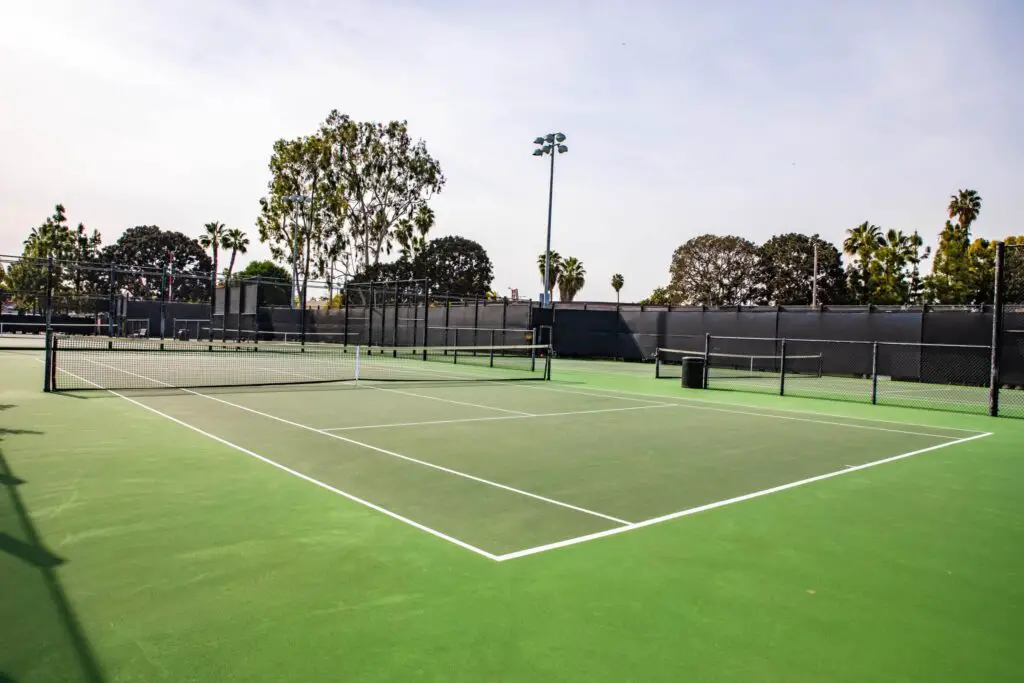
1. Surface type
An essential factor in a tennis court’s speed is the type of surface employed. Clay, grass, hard courts, and artificial surfaces are typical court surfaces. Every surface has distinctive qualities that affect ball speed and bounce.
Below, I have provided clear definitions for each type of court surface for easier understanding.
2. Ball type
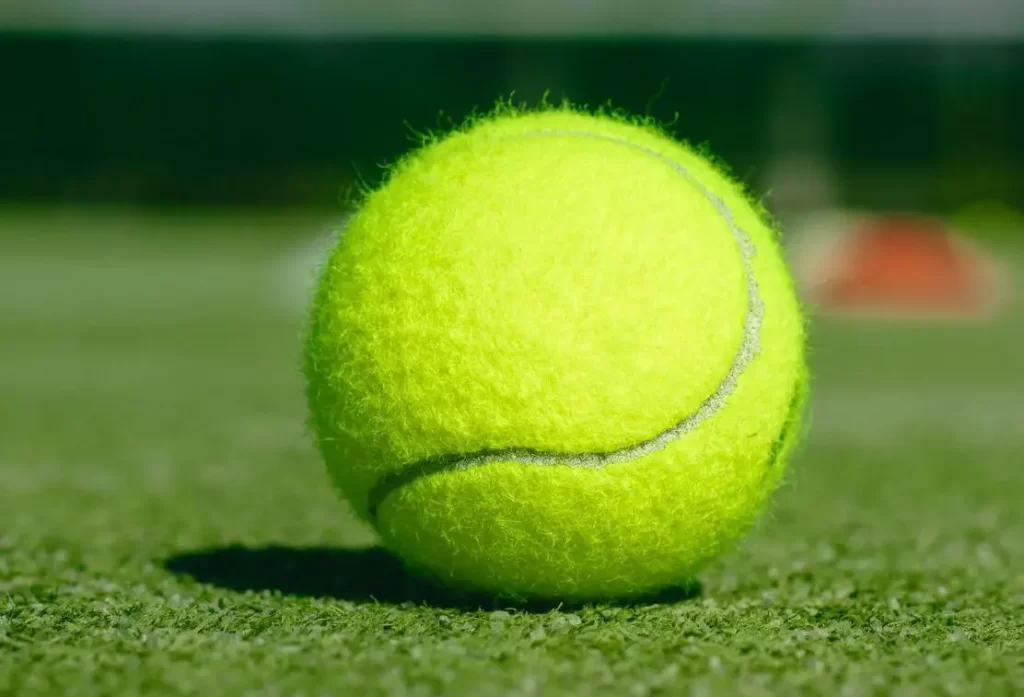
Court speed can also vary depending on the ball utilized. Tennis balls are available at various speeds, including fast, medium, and slow. Slow tennis balls tend to bounce less and leave the court more quickly.
3. Weather conditions
Court speed can be impacted by weather, especially temperature and humidity. While hot and dry temperatures might speed up play on the court, cold and damp circumstances slow it down.
I have included a link to a forum where many people have discussed the topic you’re interested in. You can find helpful insights and discussions about this topic by visiting the link.
Types of Tennis Court Surfaces
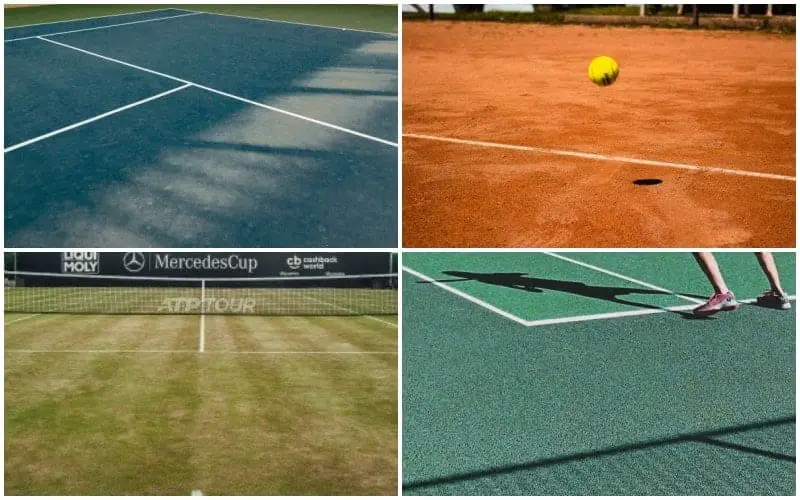
The type of court surface can significantly impact the game of tennis. Various surfaces offer diverse qualities regarding speed, bounce, and player involvement. Let’s examine the most famous tennis court surface types:
Slow Court Surfaces
Slow court surfaces move more slowly and bounce less. Players must demonstrate patience and consistency on these surfaces, encouraging longer rallies and defensive play. Among the slow court surfaces are:
● Clay Courts
Due to their soft surface and strong bounce, clay courts are renowned for moving slowly. Long rallies and tactical clashes are encouraged by them.
● Artificial Clay Courts
Artificial clay courts are designed to mimic the features of real clay courts, with a slower tempo that encourages sliding and baseline interactions.
Fast Court Surfaces
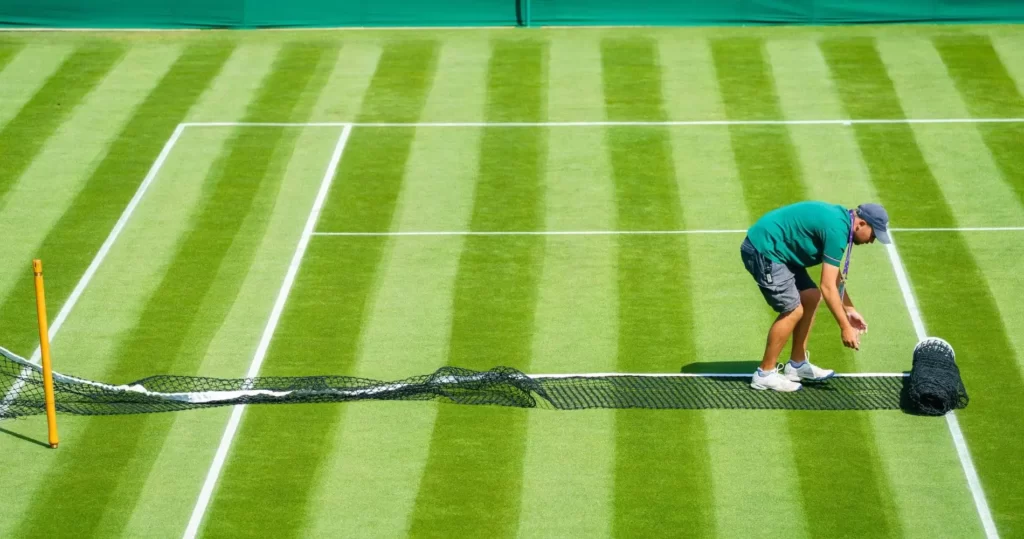
Fast court surfaces have a faster tempo and a lower bounce, which makes it simpler for players to hit through opponents. Aggressive shot-makers frequently prefer these surfaces. Fast court surfaces consist of:
● Grass Courts
Grass courts have a reputation for moving fast. Players must modify their footwork and rely on instincts due to the low bounce and quickness of the court.
● Hard Courts
Although the speed of hard courts can vary, some are regarded as swift. These surfaces enable strong shots and offer a more predictable bounce.
Medium Court Surfaces
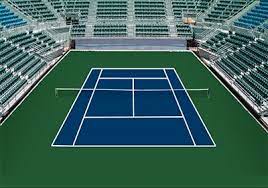
Medium court surfaces balance fast and slow court surfaces. They provide a moderate velocity and bounce to accommodate various playing styles. Surfaces of medium courts include:
● DecoTurf
The US Open uses the well-liked hard court surface DecoTurf. It offers a game with a moderate speed and a steady bounce.
● GreenSet
Another hard court surface used in competitions is called GreenSet. It provides a decent balance of control and pace at a medium tempo.
Here is a YouTube link I have added where you can find guidance on all types of tennis court surfaces. Please check it out and use it as a helpful resource for your reference.
Effects of a Slow Tennis Court
Longer rallies and defensive play
Tennis matches last longer on a slow court because the ball is in play for more extended periods. Players must exercise patience and defensive prowess because it is harder to strike winners and end points fast.
Importance of patience and consistency
Players need to be persistent and patient on slow courts. As a result, players must carefully plan their points and avoid unforced mistakes because the slower pace gives opponents more time to recover shots and launch a comeback.
Strategic adjustments for players
● Adding more spin to shots
Adding topspin to strokes can be helpful on a slow court. The ball bounces higher and stays on the court longer because of the added spin, making it more difficult for adversaries to attack.
● Approaching the net less frequently
Approaching the net on a slow court may be risky because of the slower ball speed. Players frequently opt to remain at the baseline and participate in lengthy baseline rallies while they wait for the ideal moment to attempt a winner.
Techniques to Adapt to a Slow Tennis Court
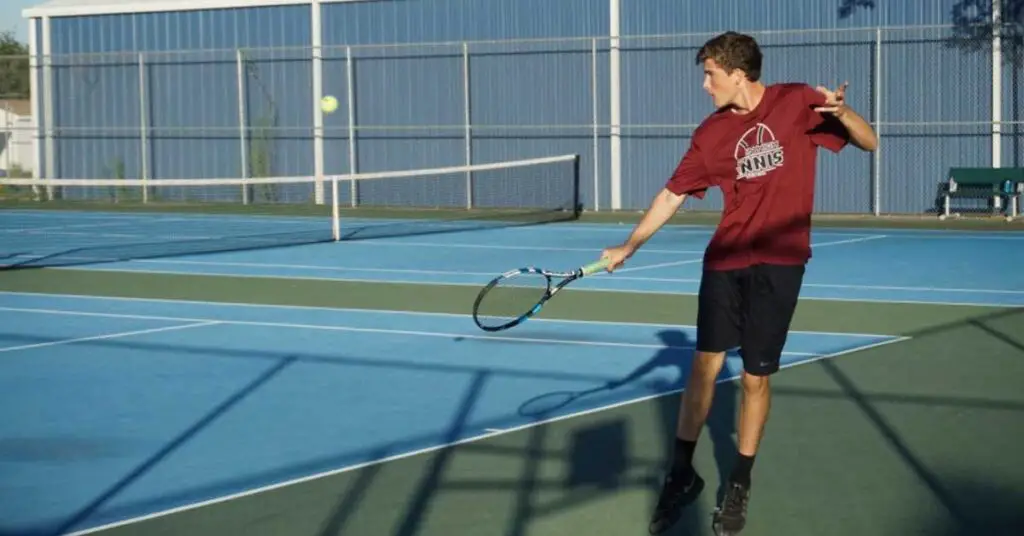
Developing strong defensive skills
Players must improve their defensive abilities to succeed on a slow court. This entails enhancing footwork, anticipation, and the capacity to block strikes from all directions.
Utilizing heavy topspin shots
Players can efficiently use strong topspin strokes on a slow court since the ball moves slowly. The additional spin keeps the ball on the court, making it more difficult for adversaries to attack.
Mastering drop shots and slice shots
On a slow court, drop shots and slices can be effective weapons. These strokes throw off the opponent’s rhythm and compel them to reposition themselves, making it more difficult for them to respond successfully.
Understanding court positioning
Understanding court positioning becomes essential on a slow court. Players must learn when to defend from the baseline, approach the net, or launch attacks using short balls.
I’ve provided a Quora link, where many people have shared their opinions and experiences for your convenience. You can get various perspectives on this topic through this forum.
Advantages of slow courts
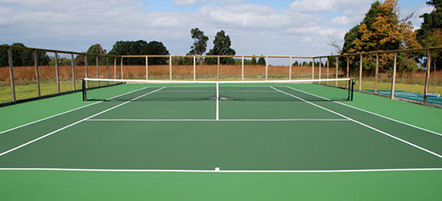
Longer rallies showcase skills
Longer rallies are encouraged by slow courts, which give players a chance to demonstrate their shot-making, agility, and defensive prowess.
It provides more time to react
Matches become more thrilling and competitive due to the slower ball speed on a slow court, which provides players more time to react and recover challenging shots.
Disadvantages of slow courts

Reduced shot variety
Players may rely more on baseline rallies because of the slower court speed, which restricts the range of shots and tactics used during a match.
Favors defensive players over aggressive ones
It can be more difficult for aggressive shoot-makers to make winning shots and control the pace on slow courts since defensive players who are good at counterpunching and consistency tend to benefit from them.
Court Speed Adjustments in Professional Tennis
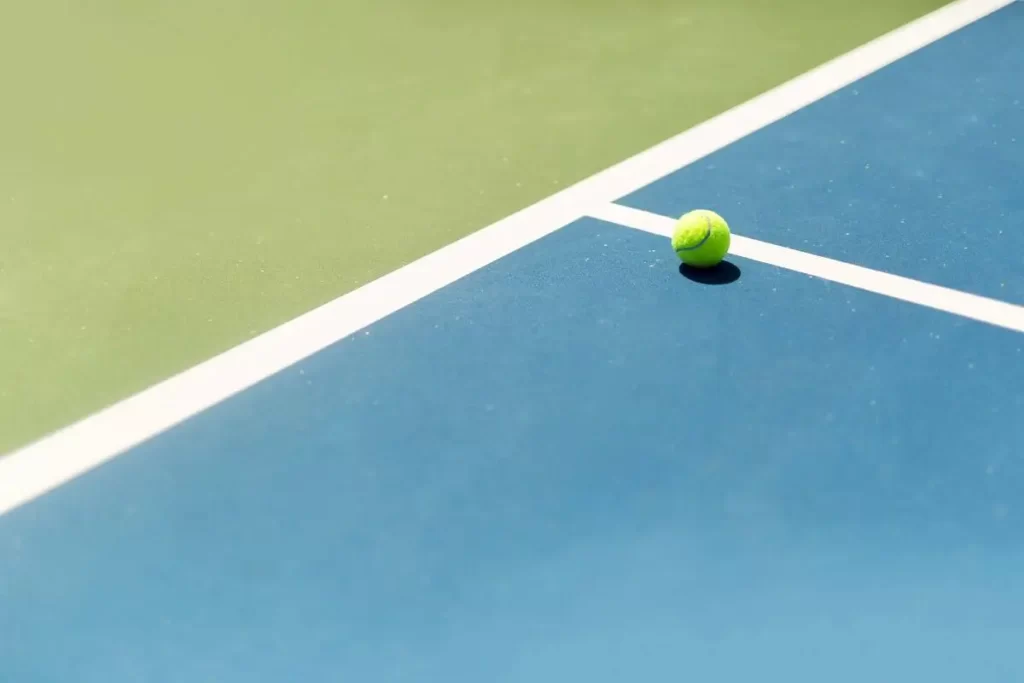
Influence on player rankings
Major competitions’ court speeds may affect player rankings. Some players might perform better on particular court speeds, which would help explain their overall performance in the rankings.
Impact on playing strategies
Depending on the court speed, professional tennis players frequently modify their methods. They could change their shot choices, strategies, and playing techniques to maximize their performance on slow courts.
FAQs
1. Can a slow tennis court disadvantage aggressive players?
Yes! Slow tennis courts favor defensive players who maintain consistency and counterpunching. On slow courts, aggressive players could have a tougher time controlling the pace and hitting wins.
2. What is the advantage of a slow tennis court?
Longer rallies can be played on a slow tennis court, highlighting the players’ shot-making, quickness, and defensive prowess. It gives you more time to react and recover from tricky shots.
3. Which playing styles are suited for slow tennis courts?
Tennis players with exceptional consistency, defensive baseliners, and counter punchers do well on slow courts. Long baseline rallies and tactical clashes are ideal environments for these playing philosophies.
4. Does court speed affect professional player rankings?
Yes, the court speed of important competitions can affect player rankings—players who perform better and rank higher may be those who excel at particular court speeds.
5. How do weather conditions influence court speed?
Environmental factors, including humidity and temperature, can impact court speed. While hot and dry temperatures might speed up play on the court, cold and damp circumstances slow it down.
Conclusion
Players and spectators alike must comprehend the idea of a slow tennis court. Players must modify their methods and strategy because slow courts offer distinct chances and challenges. The court speed is crucial in determining whether you appreciate the longer rallies and defensive battles or the speedier tempo of play.
REFERENCES
- https://www.perfect-tennis.com/tennis-court-surfaces-and-court-speeds/#What_Other_Types_of_Court_Surfaces_are_Used_Across_the_World
- https://up4tennis.com/tips-playing-different-court-surfaces/
- http://www.tennisviewmag.com/tennis-view-magazine/article/are-court-surfaces-slowing-down-game-does-it-matter
- https://tennisevolution.com/how-to-adapt-from-a-slow-court-to-a-fast-court/
- https://www.neilson.co.uk/beach/activities/tennis-holidays/types-of-tennis-court

